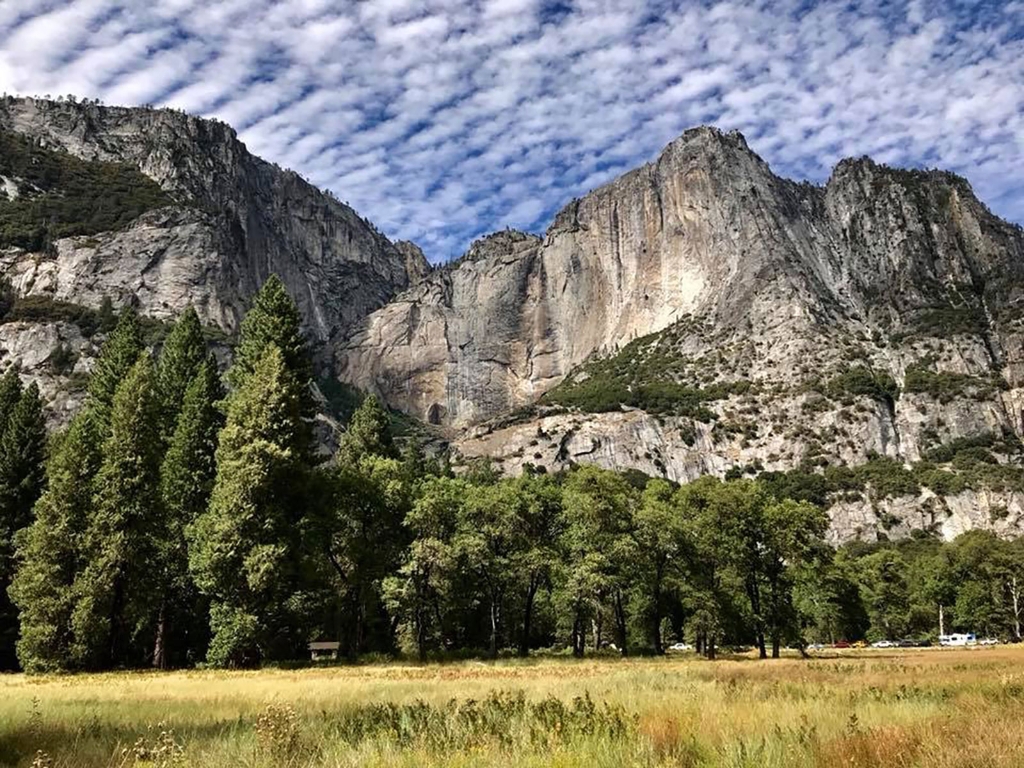
The weather in Yosemite Valley differs from other places in the Sierra Nevada with similar elevations: summers are warmer and winters are colder. Here, the 3,000-foot-high cliffs trap warm air in the summer and funnel cold air down Merced and Tenaya canyons in the winter. The cliffs also shade half of the Valley because of the low-angled winter sun.
The Sierra Nevada enjoys a "Mediterranean" climate, which means relatively dry summers and wet winters. As snow melts in late spring, the flow rate of Yosemite Falls (and noise level) may be 20 times greater than it is in autumn. In winter, spray from Upper Yosemite Fall freezes and forms great sheets of ice against the cliff wall. During warm days, large panes of ice come loose and crash to the base. Over several weeks, water continues to freeze and builds a spectacular ice cone much higher than the tallest trees surrounding you.
Yosemite Valley's weather generates seasonal change in its meadows. During winter, meadow grasses and sedges mat down beneath several feet of snow. In spring, new shoots emerge quickly and within a month the fresh, green meadow plants are already hiding the brown remnants of the previous year. Many people expect to see abundant spring wildflowers, but the densely growing sedges in these wet meadows inhibit showy displays. Throughout spring and summer, stripes and ripples of many shades of green indicate wetter and dryer regions, delineating floodways and former Merced River channels.
As you walk to the next stop, can you identify the former river channel along this portion of the meadow?
Is there something we missed for this itinerary?
Itineraries across USA


















































